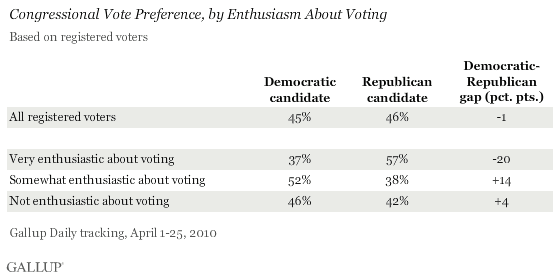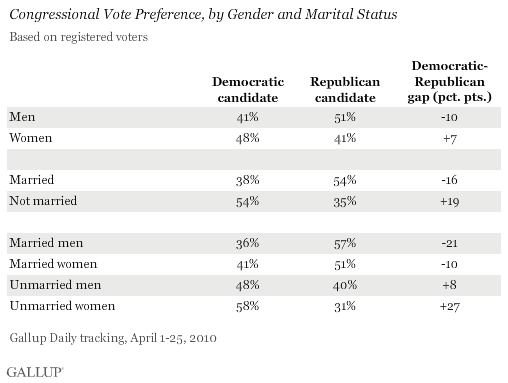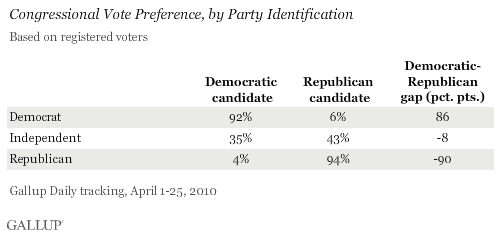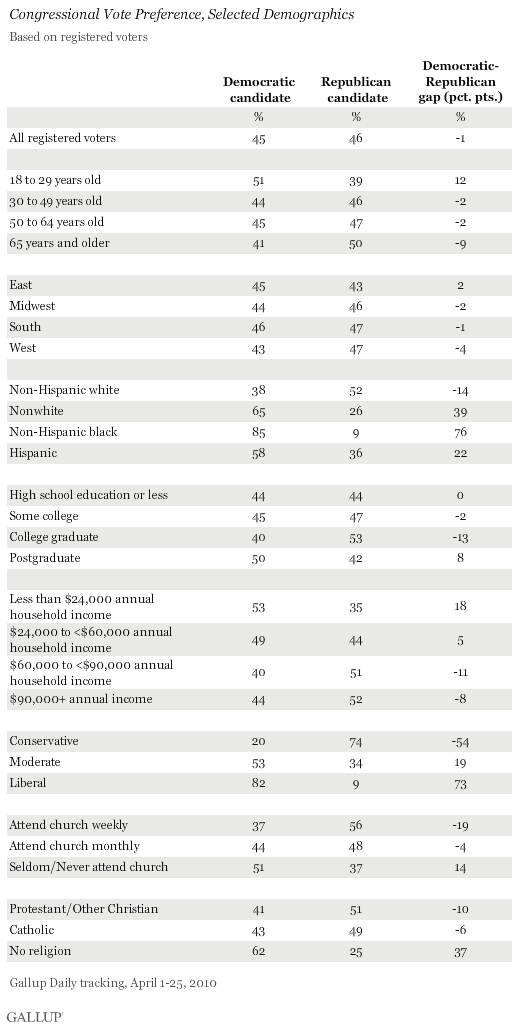PRINCETON, NJ -- Although U.S. registered voters are closely divided in their 2010 congressional election preferences, those who say they are "very enthusiastic about voting" this year show a strong preference for the Republican Party.

The analysis is based on interviews with more than 5,000 U.S. registered voters conducted April 1-25, 2010, as part of Gallup Daily tracking.
Gallup has consistently found Republicans expressing a higher level of enthusiasm than Democrats about voting in this year's election campaign. Theoretically, those who are enthusiastic about voting would be more likely to turn out to vote than those who are not enthusiastic. This fall, Gallup will be better able to measure the potential impact of turnout on the vote by applying its "likely voter" model to the generic ballot results. That model takes into account a more complete set of factors related to voting, including interest in the election, intention to vote, and past voting behavior.
In addition to the enthusiasm divide, Gallup polling since the start of April reveals large gender and marital gaps in congressional voting preferences.
Specifically, men are more likely than women to say they would vote for the Republican candidate if the election were held today, while women would favor the Democratic candidate. Those who are currently married are more likely to support Republicans, and the unmarried are more likely to support Democrats.
There is a combined effect between gender and marriage, such that married men are decidedly Republican and unmarried women strongly Democratic. Marital status seems to be the more important of the two factors, since married men and married women prefer the Republican candidate, and unmarried men and unmarried women prefer the Democratic candidate.

Both Republicans and Democrats show a high degree of party loyalty in their current congressional voting choices. Independents tilt in the Republican direction, though about one in five independents do not express a preference.

The accompanying table shows how congressional voting preferences break down among other key demographic groups. Gallup discussed age differences in voting earlier this week. In addition to age, there are the usual large differences by race and ethnicity, political ideology, and frequency of church attendance.

Results are based on telephone interviews with 5,490 national adults, aged 18 and older, conducted April 1-25, 2010, as part of Gallup Daily tracking. For results based on the total sample of national adults, one can say with 95% confidence that the maximum margin of sampling error is ±1 percentage point.
Margins of sampling error for subgroups will be higher.
Interviews are conducted with respondents on landline telephones (for respondents with a landline telephone) and cellular phones (for respondents who are cell phone only).
In addition to sampling error, question wording and practical difficulties in conducting surveys can introduce error or bias into the findings of public opinion polls.
